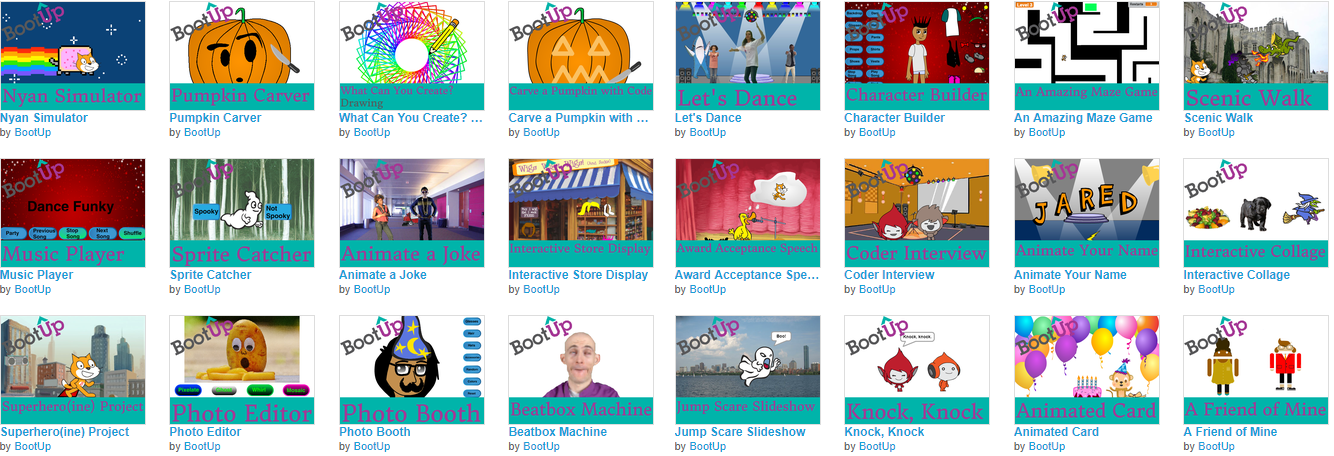Developing Self-efficacy Through Interest-driven Learning
Learn some strategies and considerations for developing self-efficacy in elementary CS classes through interest-driven learning.
The link above is a slideshow used for this presentation. All media (videos, audio clips, websites, etc.) that were included in the original are now images with active links; meaning, you can click on the image and it will send you to the original source material.
What Does Interest-driven Learning Look Like?
Free Interest-driven Lesson Plans I Continue to Develop
Listen to the #CSK8 Podcast for More Discussions on Interest-Driven Learning
Additional Resources
This webpage includes stats and resources to help with advocating for computer science within your state
Applications of Affinity Space Characteristics in [Computer Science] Education
Episode description: In this episode I unpack my (2020) publication titled “Applications of affinity space characteristics in music education,” which has twelve characteristics of informal learning spaces that I will discuss in relation to computer science education.
The purpose of the document below is to provide a "crosswalk" between classroom learning and facilitating with the TAP evaluation rubric. The "crosswalk" provides an explanation or translation of what to expect within a coding classroom as it relates to TAP discourse. This document was intended for administrators to use during teacher evaluations if they were unfamiliar with what an interest-driven coding classroom would look like.
“CS Visions highlights the importance of core values when it comes to computer science education. Understanding different reasons for teaching computer science isn’t just important so that we can get other people to care about CS, they should also shape what computer science education efforts look like - who gets opportunities to learn, what kinds of things get taught and in what ways. Our values should be expressed in our practice.”
CSTA Standards for CS Teachers
Join or create a CSTA chapter in your state
K–12 Computer Science Framework
This framework is useful for providing considerations when developing or adapting CSTA’s standards to meet the needs of your state or district
Abstract: Interest in coding education has exploded in the past five years, especially in elementary and early secondary education. Teachers who are largely new to coding are expected to guide entire student bodies through the fundamentals of coding and computational thinking. But little is known about which coding and computational thinking (CT) concepts teachers feel most comfortable with and which concepts they struggle with. This study describes 127 elementary coding teachers’ changes in their beliefs about teaching coding and CT as they participated in year-long continuous professional development. Novice elementary coding teachers demonstrated most growth in their self-efficacy for teaching sequences, algorithms and loops. They were less secure in their knowledge of conditionals, variables, and functions. For computational thinking, teachers were most confident in their ability to identify patterns, think algorithmically, understand logic, and evaluate outcomes, showing less growth with decomposition and abstraction.
More podcasts that discuss interest-driven learning
More presentations that discuss interest-driven learning
Rhizomatic Learning with Catherine Bornhorst, Jon Stapleton, and Katie Henry
Episode description: In this panel discussion with Catherine Bornhorst, Jon Stapleton, and Katie Henry, we discuss what rhizomatic learning is and looks like in formalized educational spaces, affordances and constraints of rhizomatic learning, how to support individual students within a group setting, standards and rhizomatic learning, why few people know and use rhizomatic learning approaches, how to advocate for and learn more about rhizomatic learning, and much more.
The SCRIPT: Strategic CSforALL Planning Tool for School Districts
“The SCRIPT — the Strategic CSforALL Resource & Implementation Planning Tool — is a framework to guide teams of district administrators, school leaders, and educators through a series of collaborative visioning, self-assessment and goal-setting exercises to create or expand upon a computer science education implementation plan for their students. School districts and other local education organizations are the unit of change toward creating rigorous, inclusive and sustainable K-12 computer science education. The SCRIPT supports systems-level change by addressing five key areas: (1) Leadership, (2) Teacher Capacity and Development, (3) Curriculum and Materials Selection and Refinement, (4) Partners, and (5) Community.”
Computer Science Education Resources I’ve created
Media Arts & Technology Makerspace
Twitter List
Click here to visit a list with a direct feed of users who discuss the various topics that pertain to this presentation.
YouTube Playlists
Click here to view a playlist with videos related to various topics that pertain to this presentation.


